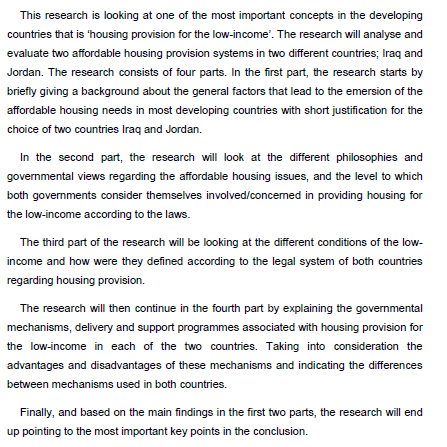This search includes the preparation of Schiff base ligand (SB) from condensation primary amine with vanillin. The new ligand was diagnosed by spectroscopic methods as Mass, NMR, CHN and FTIR. Ligand complexes were mixed from new (SB) and Anthranillic acid (A) with five metal (II) chlorides. The preparation and diagnosis were conducted by FTIR, CHN, UV-visible, molar conductivity, atomic absorption and magnetic moment. The octahedral geometrical shape of the complexes was proposed. The ligands and their new complexes were screened with two different types of bacteria.
 (18)
(18)
 (1)
(1)
Iraqi industrial units face strong competition due to many problems including1- high production costs2- weak interest in studying the market3- lack of government support for their products4- dumping the market with imported products with specifications and a competitive price as well as adopting the traditional cost system in calculating costs that do not provide appropriate information for pricing decisions Which requires studying and analyzing these problems and dealing with them by adopting modern technologies so that they can compete, so the research aims to show the knowledge bases of technology Activity- Based Costing, with an indication of the role of technology Activity- Based Costing in rationalizing the tax In, and the
... Show MoreAbstract
Nowadays, the world adopts a philosophy that relates to environmental conservation. This philosophy can be achieved through providing environmentally friendly products while satisfying customers' needs as well. To attain that, a new systems and programs need to be applied in a scientific manner, and total quality environmental management (TQEM) is among these concepts. The research aimed to analyze the Relationship between (TQEM) Practices and its effect on Flexible Manufacturing in Badush factory. The research sample includes managers and head of divisions at top, middle and front line management levels which were (27) working in Badush factory. To achieve the objectives of the study, the descriptive anal
... Show More (1)
(1)
يؤدي عرض معلومات مضللة او محرفة ضمن القوائم المالية والتي تعد أهم مصادر المعلومات الموثوقة التي يُعول عليها لاتخاذ القرارات السليمة الى عدم قدرتها على عكس نتيجة النشاط والمركز المالي لها او اعمال الوحدة الاقتصادية لتلك الفترات الزمنية بصورة صادقة وعادلة نتيجة لنوعية المعلومات المفصح عنها في القوائم المالية لذلك زاد الاهتمام بتطوير الممارسات المحاسبية لتتضمن افصاحات كافية بغرض اعطائهم صورة صادقة وعادلة
... Show MoreThis research has come out with that strategies made by Porter as generally strategies applicable to any size and type of economic units cannot be applied to many of the economic units in the world in generally and in Iraq especially not a lot of economic units have the resources and competencies that enable them to provide a unique product of its kind in the minds of customers and then adopt a differentiation strategy and not a lot of economic units have the resources and competencies that make them the cost leader. Differentiators and cost leaders are minority in the world while not differentiators and not cost leaders are majority in the world.
The economic units are not differentiators and not c
... Show MoreBanks represents financial institutions that influence the economy of any country and their evolution and development is the need to seek all states , communities, maintain and control a guarantee of the beneficiaries investors and to promote confidence, so the specialized organizations trying to set principles and rules must be adhered to and are Basel (II) of the necessary effects to be introduced and work on their application. Banks exposed by various risks one of them operational risks that have multiple effects on the activity of the institution itself, as well as the national economy, so this study was to find out what those effects and to find solutions and appropriate proposals to avoid Iraqi banks from the effects of risk,
... Show MoreThe research aims at showing the effectiveness of the existing deposit facilities in the liquidity of the Iraqi banking system for the period 2010/2017. The problem of research indicates that the Iraqi banking system enjoys high liquidity levels exceeding the standard rate set by the Central Bank of Iraq amounting to 30% For an appropriate level of liquidity remains a major challenge to the management of the bank because it is a trade-off between profitability and liquidity, and also indicates the existence of funds disabled and not available for credit and investment opportunities, and based on the research hypothesis:
The existence of a significant effect of the deposit facilities existing in the liquidity of the Iraqi banking
... Show MoreBenign prostate hyperplasia (BPH), non-cancerous enlargement of prostate, is the most prevalent disease entity in elderly men. BPH affects 40% of men after the age of 60year worldwide. BPH causes problems for patients with significant lower urinary tract obstructive symptoms, if not responding to medical therapy, surgical intervention is instituted. One method of the treatment of symptomatic BPH is laser prostatectomy. The understanding of tissue effects by laser radiation is very important for the safe clinical application of laser. Objective: study the 2100 nm Ho: YAG laser gross tissue effects in the prostate at different laser dose settings in an vitro model prostate tissue samples harvested from same specimen of open surgery prostat
... Show More (3)
(3)
 (1)
(1)
Biomedical signal such as ECG is extremely important in the diagnosis of patients and is commonly recorded with a noise. Many different kinds of noise exist in biomedical environment such as Power Line Interference Noise (PLIN). Adaptive filtering is selected to contend with these defects, the adaptive filters can adjust the filter coefficient with the given filter order. The objectives of this paper are: first an application of the Least Mean Square (LMS) algorithm, Second is an application of the Recursive Least Square (RLS) algorithm to remove the PLIN. The LMS and RLS algorithms of the adaptive filter were proposed to adapt the filter order and the filter coefficients simultaneously, the performance of existing LMS
... Show More
